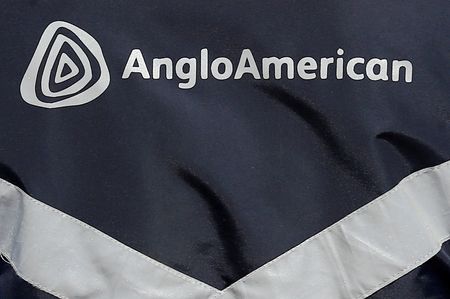By Clara Denina and Helen Reid
LONDON (Reuters) -Global miner Anglo American Plc on Friday cut its copper production outlook for 2023, impacted by lower grades at its Chilean mines, and also trimmed the higher-end of output target for 2022.
The London-listed miner now expects its copper mines to produce between 840,000 and 930,000 tonnes in 2023 compared with a prior estimate of 910,000 tonnes to 1.02 million tonnes.
In 2022, it expects to produce between 650,000 and 660,000 tonnes of copper from a previous guidance between 640,000 and 680,000 tonnes.
The Quellaveco mine in Peru has received $5.5 billion in investment and began pilot production of copper concentrate last July. Anglo estimates it will produce around 300,000 tonnes a year for the first 10 years.
The company also forecast a 3% drop in overall output this calendar year as the Quellaveco ramp-up and strong diamond output only partly made up for the lower output elsewhere. It said production should grow about 5% in 2023 from 2022 levels.
Chief Executive Duncan Wanblad told investors the company’s focus in 2022 has been to restore normal operations after the COVID-19 related disruptions, which added to worries over global economic volatility, extreme weather and other local disruptions to operations.
Anglo mines copper, nickel, platinum group metals and iron ore, which are used to make electric batteries or renewable power infrastructure or food preservation technologies.
Wanblad said while the demand for metals and minerals would be strong in the long term, there are chances of “structural shortage” to meet the energy transition demands.
After returning record dividends to shareholders thanks to strong commodity prices in 2021, Anglo in July cut payouts on higher costs and lower production.
High inflation, the prospect of a global recession and doubts about demand in China, the world’s biggest user of raw materials, could hit earnings for Anglo and its peers as costs rise.
The company expects to spend $5 billion to $6.5 billion annually for the next three years and grow output until 2024, after which it predicted some levelling in 2025.
Anglo also said that developing the Woodsmith fertiliser nutrients deposit in Britain’s North York Moors National Park, would require an investment of $500 million in 2022 and $800 million next year.
(Reporting by Clara Denina, Helen Reid, Pushkala Aripaka; Editing by Rashmi Aich, Nivedita Bhattacharjee and Arun Koyyur)

